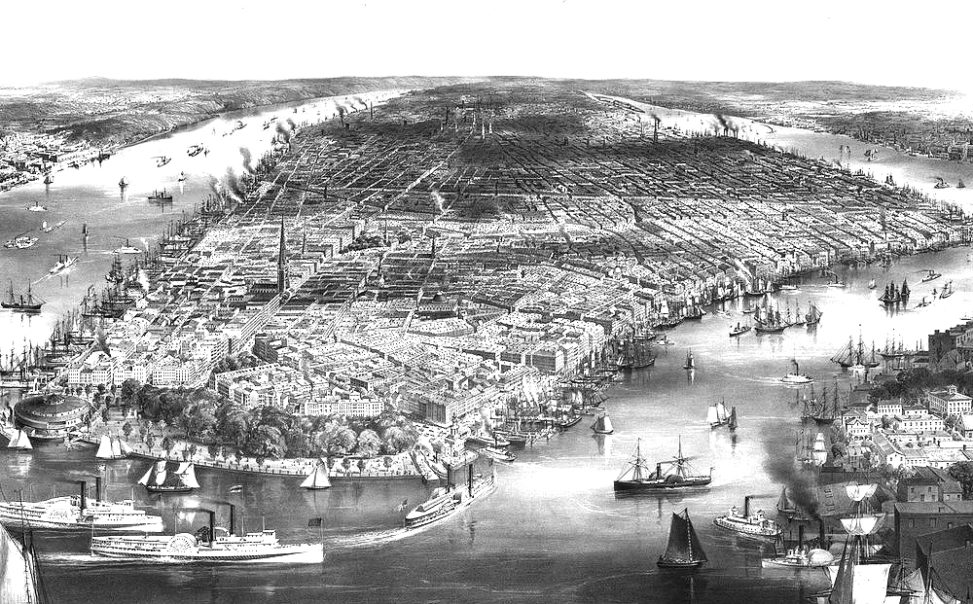There was a time when people come to New York just to prove its wonderful Oysters. Long before pizza, hot pretzels, bagels and hot dogs, NYC was known to its rich bivalves offer. Its oysters were larger, up to 10 inches, and its harbor was plenty of them, 220,000 acres of oyster beds, constituting nearly half of the oysters production in the entire world. With them other marine life were attracted for this keystone specie condition and at the same time oyster act as water-filter. That´s why before the 20th century, New York was known as the Big Oyster and Ellis and Liberty Island were “Little Oyster Island” and “Great Oyster Island”.
Oyster´s demand grew exponentially and the oyster beds were exhausted as soon as water pollution make them no longer safe to eat and the expansion of the city shoreline eliminated several acres of oyster bed. Mark Kurlansky, in his book “The Big Oyster: History on the Half Shell“, illustrate the consequences of urbanization and pollution that goes with it making the oyster the first victim of gentrification.
At this point, what we can do? In 2014 a non-profit ecosystem restoration and education project were established. Billion Oyster Project (BOP) work hard to restore a sustainable oyster population and to foster awareness, affinity, and understanding of the Harbor by engaging New Yorkers directly in the work of restoring on billion oysters. They planted 25 Million oysters, recycled 750,000 pounds of shell, engaged 70 restaurant and 107 schools, 1215 high school students, 5340 middle school students and 1053 volunteers.

Scapestudio, a NYC based landscape architecture and urban design studio added another reason to restore the oyster beds at NYC bays. Gina Wirth of SCAPE told DNAinfo in a 2014 interview that the oyster walls would “reduce water velocity, reduce erosion of the shoreline and reduce the height and intensity of waves.” This means that when some hurricane crash into NYC, the oyster wall acts as a “living breakwaters“.
This projects are becoming a win-win relation-ship between oyster, enviroment and NYC inhabitants. Kids are learning sciencies by helping at this projects, at the same time according to the city´s most recent Harbor Suvey Report, the Harbor is cleaner now that at any time in the last 100 years and the inhabitants of New York are eager to swimm, fish and eat what the sea could provide.
This new approach should be the way our next steps should move forward. The future of urbanism and architecture, as long as we know is over, we should find another mechanismus to address the current issues of gentrification and community life. We cannot still working with hard structures, we should look back at where we were before humanhand change everything and use natural resources to restore the equilibrium of the world.


